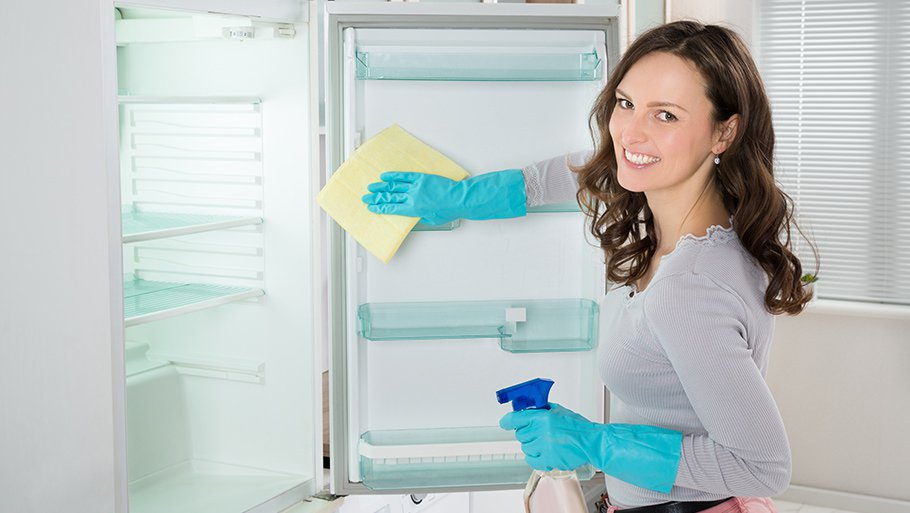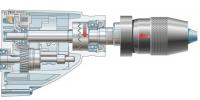How to quickly defrost the refrigerator: proven methods
Most modern refrigerators are equipped with No Frost, Full No Frost or Frost Free systems and do not require periodic defrosting. But not everyone can boast of having such a unit in their kitchen. Owners of old one- or two-compressor freezers from time to time have to deal with the problem of ice formation on the walls. What to do when you find yourself in such a situation? We offer you to get acquainted with the tips on how to properly and quickly defrost the refrigerator and freezer.

Reasons for the formation of ice
The formation of frost on the walls of the refrigerator is a natural process. However, if such an ice coat builds up too often and quickly, pay attention to the 3 most likely reasons for its appearance:
- thermostat malfunction,
- poor condition of the rubber seal,
- frequency and duration of door opening.
The first 2 reasons will help fix the service center. You just have to make sure that the household does not keep the door of the refrigerator compartment wide open for a long time.
Preparation
Before proceeding with defrosting, it is necessary to carry out the correct preparation of the refrigerator. Pay attention to the following nuances.
- Before turning off the appliance, set the temperature controller to 0 °C, then remove the plug from the mains. Try not to put it on the floor, as during defrosting water can get on the wire and cause a short circuit in the future.
- Empty the refrigerator compartment and freezer. In the winter or autumn season, take the products to the balcony. In the summer, put them in plastic bags or airtight containers and place them in a bowl of ice.
- If your refrigerator does not have a system for collecting thawed masses, be sure to install containers or a wide drip tray at the bottom for flowing water.
- Remove all drawers and trays so that they do not interfere with defrosting.
- Place a cloth under the bottom of the refrigerator. It will absorb excess moisture. Keep a bucket for wringing rags nearby.
- Lock the door in the open position. This will greatly speed up the defrosting process.
Defrost methods
Ideally, the freezer should be defrosted naturally. However, sometimes the hostess may not have extra time. In this case, accelerated defrosting methods will help you.
Fill a rubber heating pad with hot water and place it over the snow deposits in the freezer. After 15–20 minutes, the ice coat will begin to break off. Supporters of more radical measures can take advantage of the steam bath. Boil some water in a small saucepan. Place a wooden plank on a shelf in the freezer, and a container of boiling water on top. Do not place a hot container on plastic without a stand: this way you risk damaging it. Remember: as the water in the pan cools, you need to heat it up. After 40–60 minutes, there will be no trace of ice buildup.
Use accelerated defrosting methods only in extreme cases. A sharp temperature drop can adversely affect the performance of the cooling elements.
You can free the old refrigerator from the shackles of ice with a spray bottle filled with hot water. Spray walls for 15 minutes or more. Sooner or later, frozen condensate will succumb. Instead of a spray bottle, you can use a regular rag. Soak it in hot water and rub the walls until the ice begins to crack and chip. Never scrape off the ice crust with a knife or other sharp objects. You can damage not only the plastic, but also the refrigerant channels passing under it.
The heater copes well with frozen lumps. Install it so that the melted water cannot get on it, and the warm air coming from the device is not directed to the rubber seal. You can use a hair dryer in the same way.
Remember: use accelerated defrosting methods only in extreme cases. A sharp temperature drop can adversely affect the performance of the cooling elements.
Final stage
After the ice melts, the refrigerator compartment, freezer, all trays and drawers must be thoroughly wiped. Add vinegar, baking soda, or vanilla essence to your wash water to eliminate bad odors. Do not turn on the device immediately after the procedure. Let it dry well. A fan will help speed up this process.
To avoid short circuits and other unpleasant consequences, do not forget to thoroughly dry the floor around the refrigerator. To prolong the life of the rubber seal, lubricate it with a little sunflower or olive oil. Then wipe the shelves and walls of the unit again with a dry cloth and only then plug it into the mains. Start loading food after the refrigerator and freezer have reached a sufficiently low temperature.




